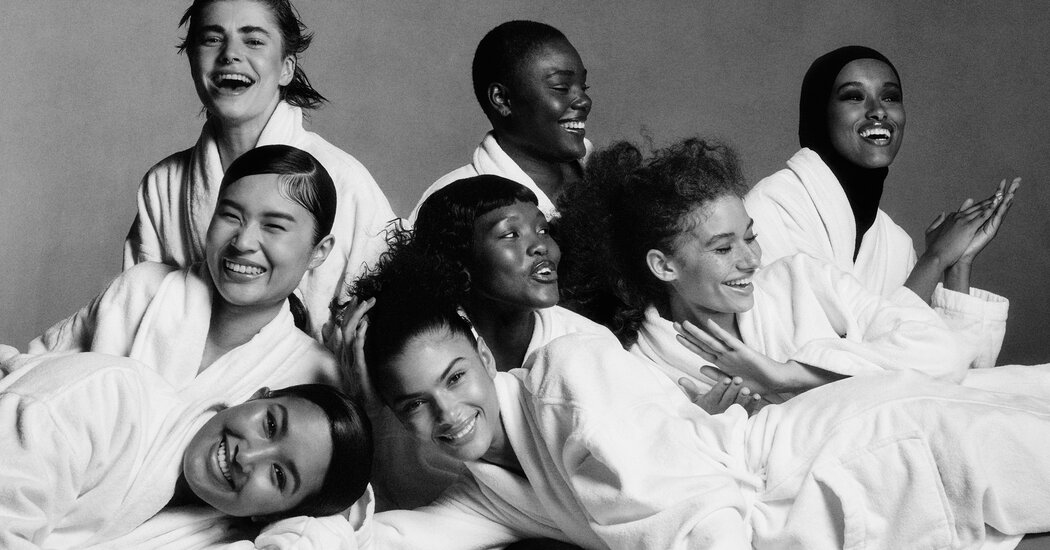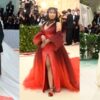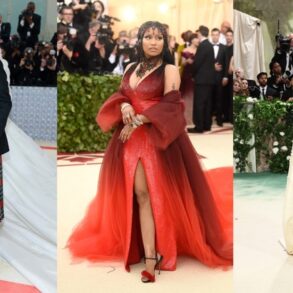
The fashion industry’s bible embarked on a public model search. There were 67,000 applications. What exactly were they looking for?
It is a curious moment in modeling.
There is a gale-force wind of nostalgia for the super-famous supermodels of the 1990s, who star in a new Apple TV+ documentary series and recently were on the covers of British and American Vogue.
And there is a desire within Vogue for fresh talent within its pages.
“Sometimes there’s a feeling that we’re kind of stuck in a rut of just shooting the same girls,” said Rosie Vogel-Eades, the global director of talent and casting at Vogue, who acknowledged that the magazine has not traditionally been an outlet for discovering new faces. Generally its models have already walked runways and secured agency reputation.
That doesn’t mean it couldn’t try. “Who are the new girls?” Ms. Vogel-Eades asked.
So, to sate its desire for new blood, Vogue took a semi-old-fashioned route. In April, the magazine put out a global casting call for models, not unlike how magazines decades ago culled young women to become their guest editors (Mademoiselle) or cover models (Seventeen) through public contests.
Except in 2023, the aspiring Vogue models, who the magazine required to be “femme-identifying” and over 18, were asked to submit social media-ready videos. And the committee members overseeing the contest wanted to prioritize diversity — a relatively recent concern for those in power in fashion.
The result: eight fresh-faced finalists, narrowed down from more than 67,000 applications. The winners were announced earlier this month.
Two of the models, one living in Ghana and the other in Britain, said they were interested in becoming lawyers. A model from South Africa said she hadn’t been on a plane until her trip to London to join the other finalists in a photo shoot this summer. The only American chosen was a recent Vassar graduate who double majored in psychology and women, feminist, and queer studies. They go by the name Mars — no last name. The contest’s Japanese finalist also goes by the name Dulmi — no last name.
On Tuesday evening, Vogue hosted a cocktail party for the models in Paris, flying them in for the occasion (with the exception of Mars, who was ill).
They munched on hors d’oeuvres, gleefully posing for photos — one had a digital camera hanging from her wrist “for vlogging,” she said — while another accidentally sent a golden-hour photo shoot from her phone to a stranger via Airdrop. At least one model was plotting a visit to the Eiffel Tower before leaving town. Another was quietly pulled away to greet Anna Wintour, who was seen chatting in a quieter corner with the film director Baz Luhrmann.
The global open casting, which came after a Chinese version led by Margaret Zhang, Vogue China’s editor in chief, was a direct response to a rather homogeneous Paris Fashion Week earlier this year, according to members of the selection committee.
“Size diversity on the runway was nonexistent, pretty much,” Mark Guiducci, the creative editorial director of Vogue, said, citing a report that calculated that less than 1 percent of looks presented on that season’s runways were worn by plus-size models.
So the editors began “thinking about how we can make a meaningful impact that isn’t about just taking designers and brands to task, but actually helping make a difference with our platforms,” said Mr. Guiducci, who served on the committee with seven other members of Vogue’s masthead. They were joined by two casting directors from DMCasting, Eva Chen of Instagram and Paloma Elsesser, a model and an advocate for size diversity.
And yet among the women selected for the final group, only two could be categorized as curve models, and they both appeared more midsize (between a United States size 6 and 12) than plus-size (above a U.S. size 14).
That fact, Ms. Elsesser said, was “100 percent brought up” by her and Gabriella Karefa-Johnson, Vogue’s global fashion editor at large. (Ms. Karefa-Johnson added, though, that among the tens of thousands of applicants, there “wasn’t a huge percentage of curve-model submissions” to choose from.)
“We have so much work to do,” said Ms. Elsesser, who wore a Jacquemus look — an off-the-shoulder sculpted minidress with black tights and red square-toe heels — to Vogue’s party.
For models going though the casting process, she said, there is still a “very eerie elephant in the room, no pun intended, around fatphobia.” Midsize models and “slightly curve” models are finding more acceptance than larger plus-size models.
“I want to be everywhere,” said Colette Kanza, one of the two curve-model finalists. A Parisian from the Netherlands, she already had agency representation before being selected by Vogue. (Not all of the finalists did.) “I want to be an icon,” she said.
“You already are an icon,” replied Rayan El-Mahmoud, a model from Ghana with a dusting of freckles, explosive red curls and similar ambitions. “I want to be a supermodel. I want to be everywhere. Every billboard.”
Ms. Vogel-Eades, along with Ignacio Murillo, Vogue’s global talent casting director, has been working to cast the finalists in runway shows. So far, the most successful has been Rania Benchegra, a Moroccan model who Versace cast for its recent Milan show — exclusively, meaning she couldn’t walk for any other brand in Italy. It was her first job at this scale, and she had been nervous.
“I knew all eyes were on me,” Ms. Benchegra said. “I knew if I did good, that was going to be my path toward other things. But if I messed up, that was going to be the end of me.” (It was not the end of her. At publication time, Ms. Benchegra had two major shows lined up at Paris Fashion Week.)
It’s not hard to see why Vogue chose these women: They are very easy to imagine frozen in an image mid-laugh, joyful and vital with their hands on their waistlines in that model sort of way.
But there are a lot of young, beautiful people looking for modeling work in this world. How did Vogue land on this bunch? What traits capture what it means to be beautiful — or beautiful enough to win an international modeling contest — in 2023?
The answers are not as straightforward as the question.
Ms. Vogel-Eades said there’s no longer “one look” that unlocks success for a model. “Gone are the days where a designer would have just one look on the runway, because that doesn’t feel modern anymore,” she said, citing fashion’s phases with Russian models or Brazilian models. “I’m all about personality. I love girls who are fun and chatty.” And enthusiastic.
“A lot of models don’t necessarily really like modeling,” she continued. “Someone who enters a competition generally does really want it. It’s not like, ‘Oh, I was on my way to the supermarket and someone hunted me down, and I never really thought about modeling.’” (This, in the business, is called street casting. It’s how Naomi Campbell and many other big names were discovered.)
“It’s so nice when they’re on time,” Mr. Murillo, the casting director, said. “There’s some girls that are just not in it. I don’t know why they do it.”
Ms. Elsesser said she was looking for “star power”: “I’m not the tallest. I’m not miss walker” (referring to the skill with which she struts down a runway). “I’m not someone’s daughter. But to some people, I’m a star, and that’s all that matters.”
Mr. Guiducci said he followed his “gut reaction as an editor” over dubious modeling trends, like “wider-set eyes,” for example. “It feels very old-fashioned to talk that way,” he said.
“The videos that were TikTok fluent or Instagram Reels fluent — people who could create content — were the ones that stuck out to us,” Mr. Guiducci said. “Describing the supermodels once, Anna Wintour said, ‘You looked at them not because of what they were wearing, but because of who they were.’ Personality is what you’re after.”
This post was originally published on this site be sure to check out more of their content.






